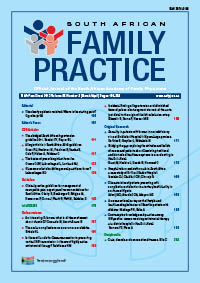The ocular complications of an envenomous snakebite
Keywords:
Snakebite, venom, ocular complications, public health
Abstract
An envenomous snakebite is an important public health problem that can lead to irreversible loss of vision. Snake venom neurotoxins mainly act on the peripheral nervous system at the neuromuscular junction, and result in the implication of the cranial nerves. Consequently, mild neurological symptoms that relate to cephalic muscle paralysis, including exotropia, ptosis, diplopia and ophthalmoplegia, can occur. This happens because the extraocular muscles are especially susceptible to neurological muscular blockage. Other neurological complications of snake venom include accommodation paralysis, optic neuritis, globe necrosis, keratomalacia, uveitis, and loss of vision due to cortical infarction. Haemostatic complications may include subconjuctival haemorrhage, hyphema, and vitreous and retinal haemorrhages. Another rare complication of a snakebite is ocular injury. Snakebite injuries are often accompanied by facial swelling, periorbital ecchymosis, massive subconjuctival haemorrhage, severe corneal oedema and exophthalmos in the affected eye. Unfortunately, such injuries result in permanent loss of vision, as early evisceration is deemed necessary to reduce the amount and effect of the venom in the affected eye. With such a variety of ocular complications as a result of a venomous snakebite, it is important for primary care physicians to have some basic knowledge of the management of these complications, as they may prove to be vital where patients present with a snakebite and possible venom injection in the eye.
Published
2012-11-15
Section
Review Articles
By submitting manuscripts to SAFP, authors of original articles are assigning copyright to the South African Academy of Family Physicians. Copyright of review articles are assigned to the Publisher, Medpharm Publications (Pty) Ltd, unless otherwise specified. Authors may use their own work after publication without written permission, provided they acknowledge the original source. Individuals and academic institutions may freely copy and distribute articles published in SAFP for educational and research purposes without obtaining permission.

